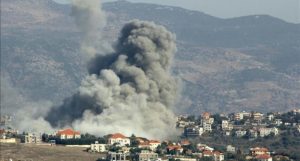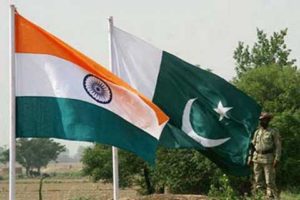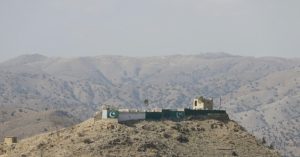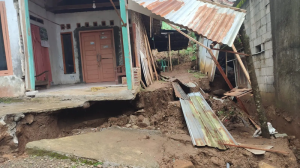Taliban-militants-in-Afghanistan-have-seized-scores-of-armored-vehicles-of-the-United-States-and-are-using-them-to-carry-out-insurgent-activities-mostly-unnoticed.-300x233.jpg" alt="Taliban militants have seized scores of armored vehicles of the United States and are using them to carry out insurgent activities, mostly unnoticed." width="300" height="233" /> Taliban militants have seized scores of armored vehicles of the United States and are using them to carry out insurgent activities, mostly unnoticed.
Kabul, 6 Jumadal Awwal 1437/15 Feebruary 2016 (MINA) – In an attack using a tactic long feared by Afghan officials, Taliban suicide bombers riding in two stolen Afghan Army Humvees clashed with security forces on Saturday in southern Helmand Province, killing six security personnel at a checkpoint, Afghan officials said.
While the Afghan government has publicly played down the threat, in private, officials have warned that insurgents, who have in the past largely relied on motorcycles and basic weapons, could gain new advantages by turning seized or abandoned military equipment against Afghan security forces.
As insurgents grabbed territory last year that was once controlled by Afghan forces, they also seized weapons and Humvees provided by the American military from bases and checkpoints abandoned by Afghan forces, which are stretched thin fighting on their own without the combat assistance of NATO forces, Mi’raj Islamic News Agency (MINA) quoted nytime.com as reporting.
The exact number of Humvees taken by the Taliban is unclear, but accounts from multiple officials and Taliban commanders from across the country suggest that it could be more than 150.
Also Read: Trump Designates Saudi Arabia as Major Non-NATO Ally in Historic Defense Pact
A spokesman for the Afghan Defense Ministry, Brig. Gen. Mohammad Radmanish, however, said the number of captured Humvees was much lower than those reports.
“Yes, some of the Humvees, both from the police and army, were taken by the enemy in Kunduz and other places,” General Radmanish said, referring to the northern city that briefly fell to the Taliban in the fall. “But the number is very low. We tried to either destroy them or take them back from the enemy.”
The clash on Saturday unfolded in Sangin district, which has been on the verge of falling to the Taliban, prompting a major operation to push them back. Gen. John F. Campbell, the departing commander of NATO and United States forces, said in Kabul on Saturday that the Afghan Air Force was heavily engaged in the fighting in Sangin, deploying Mi-35 helicopters recently received from India.
Gen. Abdul Rahman Sarjang, Helmand Province’s police chief, said on Saturday that six Taliban suicide bombers riding in Humvees were trying to carry out a “complex attack” on a nearby police and army base when they approached a checkpoint outside the base. A firefight erupted and two of the bombers managed to detonate their explosives, killing four policemen and two soldiers and wounding eight others. All of the insurgents were killed.
Also Read: Russia Condemns UN Gaza Resolution, Says It Contradicts Palestinian Statehood
Col. Michael T. Lawhorn, a spokesman for the United States forces, said American aircraft could respond to direct threats to the American-led NATO coalition forces in Afghanistan, but he would not comment beyond that on specific rules of engagement.
The seriousness of the threat from the Taliban’s use of captured or abandoned equipment first came to the fore when the insurgents briefly seized control of Kunduz in the fall. Videos surfaced of Taliban fighters driving Humvees, and some tanks, out of Afghan Army and police bases in the city.
More than 40 heavy-duty vehicles were taken by the Taliban, according to Hamdullah Danishi, who until recently was the acting governor of Kunduz. Mr. Danishi, who like many Afghan officials used the word “tank” to describe Humvees and other heavy-duty vehicles, has repeatedly warned that the seized vehicles still pose a major threat to the province.
“If the Taliban managed to take the city with motorcycles once already, now that they have such tanks they can easily take Kunduz again if they decide to,” Mr. Danishi said. “The planes have not yet hit a single one of the tanks that are with the Taliban.”
Also Read: Israeli Airstrike on Palestinian Refugee Camp in Lebanon Kills 13
In northeastern Badakhshan Province, where the Taliban have launched major offensives in the past year, Taliban commanders and Afghan officials said 13 Humvees were seized by the insurgents in the past six months.
Five of the Humvees have been destroyed in airstrikes and one has broken down, but the rest are functioning, two Taliban commanders said, adding that they keep the Humvees in covered garages and have welded additional armor onto some of them. The Humvees played a major role in the Taliban’s seizure of Yamgan district.
“At first, we were not used to driving them, and a couple of them tipped over in Jurm and Warduj, wounding and martyring our fighters,” said Malawi Amanuddin, the Taliban’s shadow governor of Badakhshan. “Now all my fighters know how to drive them.”
In Helmand, the stolen Humvees, 50 to 100 according to various accounts, have added to the woes of an already struggling and exhausted Afghan security force. The Humvees have been used in attacks in Babaji, a suburb of the provincial capital, Lashkar Gah, and in an assault that penetrated an army camp in Nawzad district.
Also Read: Saudi Arabia to Boost US Investments to $1 Trillion: Crown Prince
Three Humvees were also used in an attack against a team working to locate and deactivate mines in Greshk district last month, a local official said.
The official said he hoped that the recent deployment of American forces to Helmand to advise and assist the Afghan troops would also mean better coverage by surveillance planes that could detect where the Taliban hide the stolen Humvees. (T/R07/R01)
Mi’raj Islamic News Agency (MINA)
Also Read: New York Mayor-Elect Vows to Uphold ICC Arrest Warrant Against Netanyahu































 Mina Indonesia
Mina Indonesia Mina Arabic
Mina Arabic